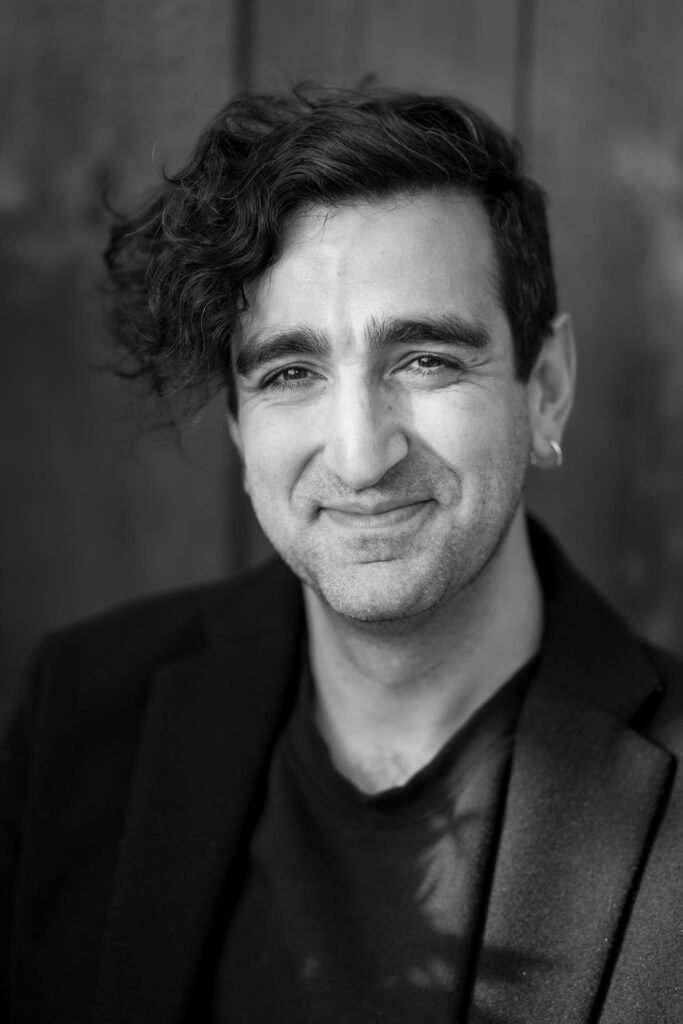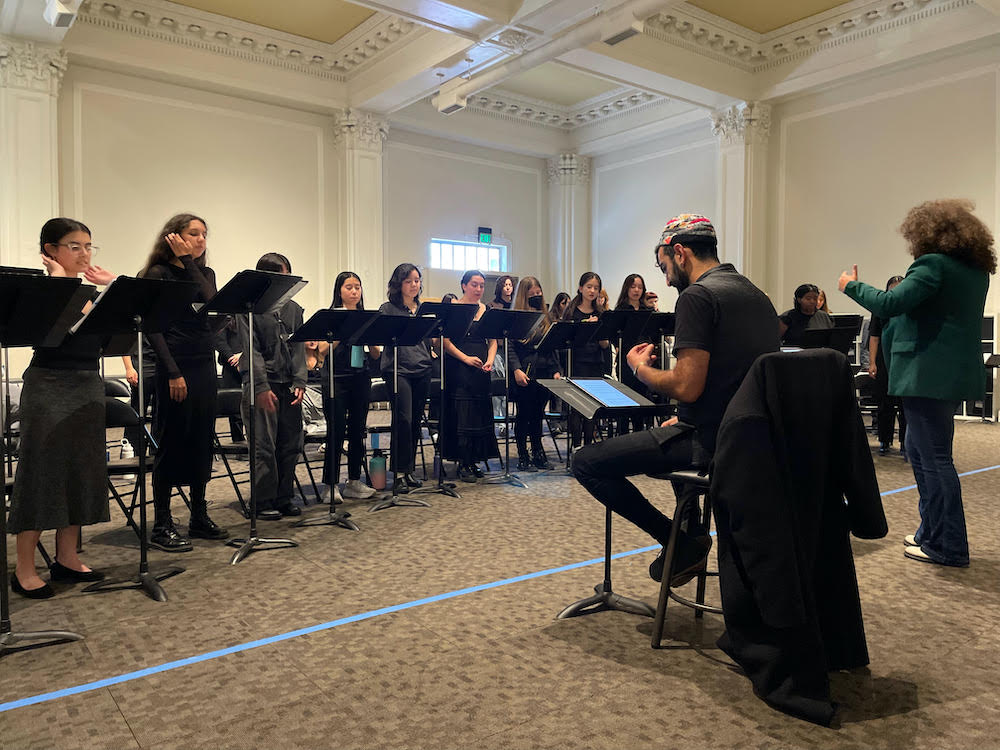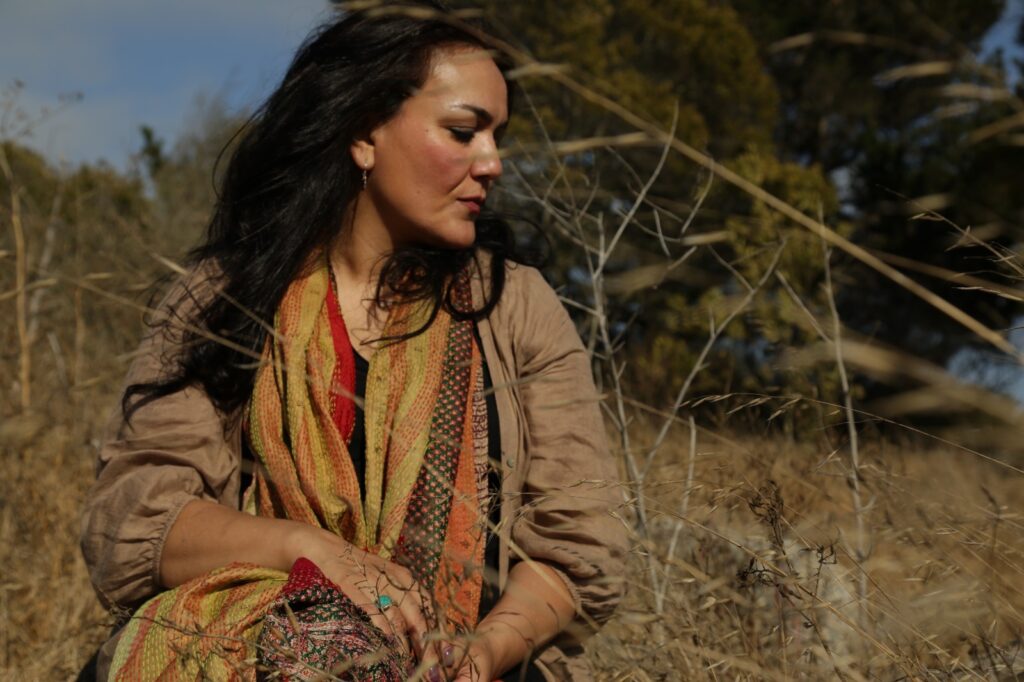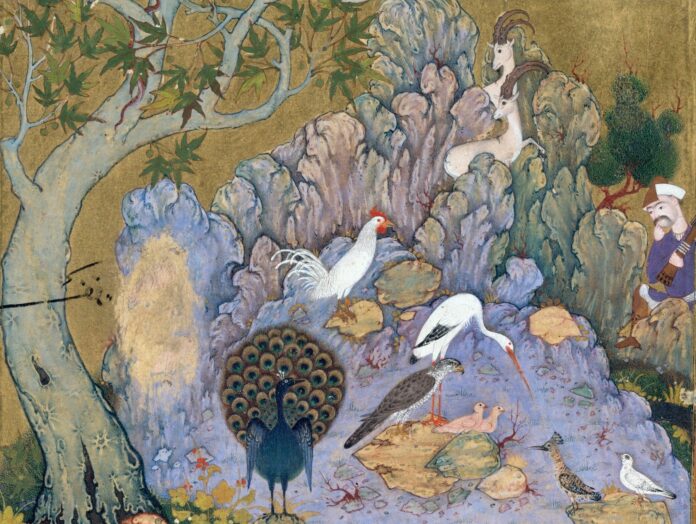When nonprofit arts organization 836M announced Sahba Aminikia as its first composer-in-residence last December, a centuries-spanning collaboration began to take shape. The Iranian-born composer brought with him The Language of the Birds (May 31 and June 1), a project inspired by the 12th century poem bearing the same title by Farid ud-din Attar, a Persian mystic revered by the 13th century poet Rumi and many others.
After hundreds of years and with the support of 836M, which was co-founded by Julie & Sébastien Lépinard and Agnès Faure and named for its gallery at 836 Montgomery Street. A remarkable lineage, extending from Attar to Rumi to Aminikia to 2024 audiences, will give birth to a new work of art.
Such durability suggests that these mere words, written on a page or spoken, chanted, or sung aloud, must have heft. Not necessarily complexity, but weight, eternal truth, universality. The ideas they express must offer a kind of timelessness that has left hundreds of years of witnesses saying, “This is so now.”

In an interview with 48hills, Aminikia says, “I always heard it as this prominent story from the 12th century. Then I started a project studying the poetry of Rumi, who at the end of his life was inspired by this book The Conference of the Birds [a title also used] by Attar. I found when digging into this poem that any Persian story that has animals as main characters comes from ancient Indian traditions and has been referred to by philosophers and mystics long before Attar. As it says in the Bible, ‘nothing under the sun is new.’ It’s true of all magnificent works of art. It was gorgeously refreshing to realize all these philosophies from then to now are connected to each other.”
The bridge from these words to today’s audiences and society at large, he says, is remarkably direct. The story behind the birds centers on a journey everyone makes: life, a voyage and quest through joy and trauma in which we reach for enlightenment about how to live harmoniously with ourselves and with other people. In this story, the birds gather and with Hoopoe, an ambassador selected to lead them, set off in pursuit of the celestial bird or “king bird,” who will reveal the truths they seek. There is loss, degradation, in-fighting, love, anger, doubt, and everything else that happens during a marathon road trip. In the end, the birds who survive see themselves reflected in the celestial avian and thus, realize they held the truth within themselves all along.
To rope in such a vast story and substantive themes, says Aminikia, the time that the residency provided proved quite necessary. The five-month development period included open rehearsals and showings, a jam session with dozens of musicians, public readings of Persian poetry, and most importantly, opportunities for Amanikia and his collaborators to work closely together, and with enough time for reflection.
“It’s unique in that there is no sense of 836M possessing the piece. They provided a platform, which is lovely,” he says. “Everyone is here to provide what I need and to bring my vision into life. They even obtained the permissions needed to incorporate various things and other practicalities, so I’m extremely thankful to them.”
Aminikia is collaborating on the project with librettist Zara Houshmand, the San Francisco Girls Chorus, the Living Earth Show duo guitarist Travis Andrews and percussionist Andy Meyerson, multimedia artist John Sanborn, educator David Coulter, and Persian singer Marjan Vahdat.

He says the work consists of three episodes: a prologue, a middle section approaching the seven valleys to which the birds travel, and the epilogue. Because there are improvisational sections, the score, written for 47 minutes, will extend to a performed work that lasts approximately 80 minutes.
Aminiki and Houshmand have worked together previously, including a two-year project in 2021 that culminated in Chance, a reflection on the poems of Rumi. “She’s an incredible author and poet. She’s extremely involved in Persian and English literature. She can convey the meanings and her original text based on the poem is child-friendly, but deep. The words are simple, but convey complexities. For example, ‘souls from clay’ is the creation of all humanity by the Creator. ‘He gave us wings, let us fly, let us play,’ has great poetry and the words create a game. The meaning of my art comes close to ‘gameification,’ because it brings something to people they can enjoy and be challenged by. If you look at everything on earth, it’s games and group activities.”
Another game player is Bay-Area video and digital media artist Sanborn, whose highly regarded work in television and video have earned him international renown.
“I’ve known him from before and recently having breakfast together, I realized I loved his brash, bold, and brave mentality,” says Aminikia. “There was an expectation I would bring a lot of Middle Eastern people into this project and I was going against that, because I believe these philosophies are global.” He was curious to see the Western take on this giant story from Iran, so Sanborn’s expertise in AI was also of interest. Sanborn eventually created state-of-the-art “gorgeous imagery and animation” influenced by Eastern art, but also reflecting the “clownishness” of Sufi mysticism, according to Aminikia.
About the musicians, including Coulter, who will show up without having rehearsed with the group and perform improvisational material, Aminikia suggests that he could not be more pleased. Coulter often performs on instruments he’s invented and built or found and in a less busy time, would show up at Aminikia’s home to improvise for hours. “He carries magic and has a great ear and intuition for a piece that combines written and improvisational writing. It brings the project into life with a free aspect based on design concepts,” says the composer.

Vocalist Vahdat will perform entirely in Farsi, singing in seven different modes while retaining Persian tuning. “Every mode divides into 20 to 30 different melodic figures, so it’s complex to the mind, but not to the ear,” Aminikia says.
The young singers represent the birds and perform in English; singing a cabaret of styles from Iranian to jazz, Blues, spirituals, and in one section, playing kazoos. “They’re playful and their presence in my work is a privilege,” Aminikia explains. “When they have fun, it is for me a successful experience.”
Andrews and Meyerson have collaborated with Aminikia for nearly 16 years. “They’re magnificent performers and lifetime learners open to any kind of music,” he says.
The “big idea,” and what he hopes audiences will take with them is simple, but complex—much like the work’s various components. “Our world is ravaged by polarity, by division in all nations,” concludes Aminikia. “The story is of unification. Bringing together this legendary bird and ultimately reaching nirvana is only possible through unification of mankind. That’s what I’m honoring: music created with people that will be witnessed by audiences to show we are stronger as we find the common qualities of our humanity.”
THE LANGUAGE OF THE BIRDS runs May 31 and June 1 at 836M, SF. More information here.





